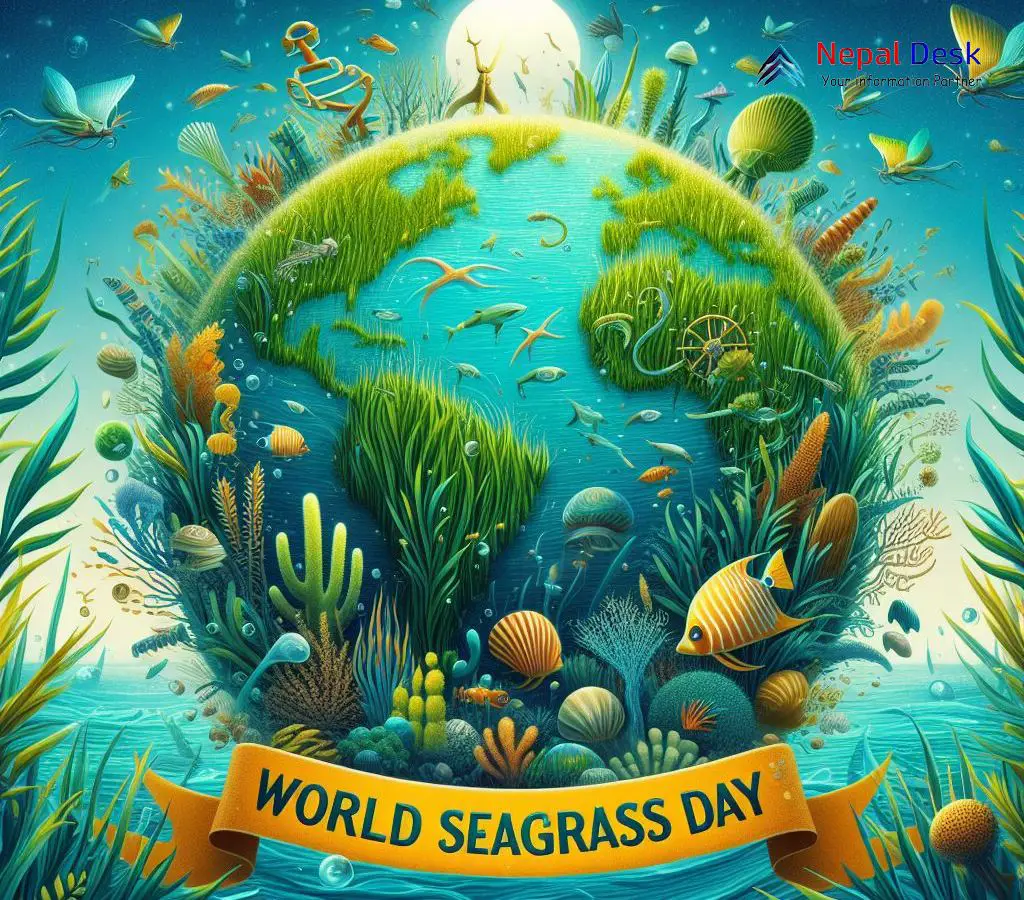World Seagrass Day: Underwater Gardens for a Sustainable Future
Published Date

Published Date
Learn about the significance of World Seagrass Day in highlighting the crucial role of seagrass ecosystems and the urgent need for their conservation.
⏱ 4 min read
With the realization of how vital seagrass are to the environment and the urgency of their conservation, the UN General Assembly thus commemorated March 1st as World Seagrass Day in May 2022. This initiative affirms the necessity of disseminating information and carrying out activities that are directed at the maintenance and growth of seagrasses. This reminds us about their role in ecosystem services and to achieve the Sustainable Development Goals.
These sea plants found in shallow waters worldwide constitute from the equatorial regions to the Arctic boundaries. They develop large meadows on the sea floor where there is a wide range of species with many benefits environmentally, economically, and socially. However, seagrasses are one of the most critical coastal and marine ecosystems that have been coming under severe threats globally.
Despite the fact that they cover only 0.1% of the ocean floor, these meadows are significant for hundreds of aquatic animals including fish, seahorses, and turtles and have provided for some of the most productive fisheries on the planet. They are a main component of water purification systems since they remove nutrients and pollution from the water which then guarantees the safety of our seafood from pollution.
Seagrasses, which are extraordinary carbon sinks, store a substantial part of the oceanic carbon, being a strong protective tool against climate change impacts. Thus, the system of calcification helps the oceans to withstand acidification and protects delicate world ecosystems and coral reefs. Further, these underwater gardens sustain coastal communities by absorbing wave energy and reducing storm and flood damage.
However, this valuable resource is at risk—only about one-fourth of these meadows are under marine protection. With a downward trajectory dating back to the 1930s, we now face an annual loss of 7% of this habitat globally. Alarmingly, about one-fifth of all seagrass species stand on precarious ground within categories like Near Threatened to Endangered on the IUCN Red List.
The onslaught of coastal development, pollution from terrestrial sources, climatic shifts, dredging activities, along unregulated fishing and boating practices have principally contributed to their decline.
Yet there is hope; amidst wide-scale reduction in seagrass coverage are stories of regions where these key habitats have either stabilized or made remarkable comebacks—a testament to the positive impact human intervention can have when appropriately channeled.
Seagrass meadows remain as fundamental underwater as they are beneficial on terra firma. Evoking awareness around their contribution—from bolstering food supplies through fisheries to enhancing water quality through natural filtration processes and strengthening shoreline defenses against natural calamities—will invigorate global initiatives committed to their preservation and restoration.
By actively safeguarding and reviving seagrass meadows, we can not only beautify our marine landscapes but also hit a multitude of economic, societal, and dietary goals that align with both local and international policies, like:
- It helps countries fulfill 26 objectives linked to the ten Sustainable Development Goals.
- Its ability to capture and store carbon makes seagrass ecosystems valuable allies in national climate strategies, helping countries meet their commitments under the Paris Agreement and the UNFCCC.
- It is key for safeguarding marine diversity and ecosystem health.
- Its restoration provides countries with opportunities to achieve the commitment made to the United Nations Decade on Ecosystem Restoration.
Role of Nepal in Seagrass Conservation
Although Nepal is surrounded by land, it has a significant part to play in uplifting World Seagrass Day and caring for these crucial underwater prairies:
- Community Enlightenment: Nepal can create nationwide consciousness about the importance of seagrass beds through educational activities, social media engagement, and local gatherings.
- Global Teamwork: By providing their support to the countries and international organizations, Nepal may amplify the global struggle for the security of seagrass. These might be in the form of offering their expertise, trade experiences or working together on research projects.
- Policy Push: On the global level, Nepal can champion policies that protect and carefully manage seagrasses, including communicating with groups like the UN and supporting actions that preserve the ocean’s ecosystem.
- Academic Contribution: Funding, surveying, and sharing the findings from these ecological systems with all science scientists of the world can empower Nepal to achieve a deeper understanding of seagrass dynamics and develop future conservation methods.
- Goals for a Green Future: Nepal makes a significant contribution to global efforts to attain these targets as it blends its own goals and objectives with those of ocean conservation and biodiversity into the Sustainable Development Goals.
In short, even though Nepal is a landlocked country, it also can play a major role in seagrass conservation by leading the dialogue, building unity globally, carrying out research and creating awareness.
